Advancing Technology, Minimizing Impact
American Transmission Company (ATC) is upgrading underground transmission lines on the UW-Green Bay campus. While this requires disturbance within the Arboretum, we have worked with ATC to minimize the long-term impacts of the disturbance, including scheduling work to lessen effects on migratory birds and pollinators, using underground boring (rather than trenching) through a large portion of Keith White Prairie, adjusting the placement of the line to avoid sensitive plant species and planning post-project restoration work. The work is expected to be done by 2026.
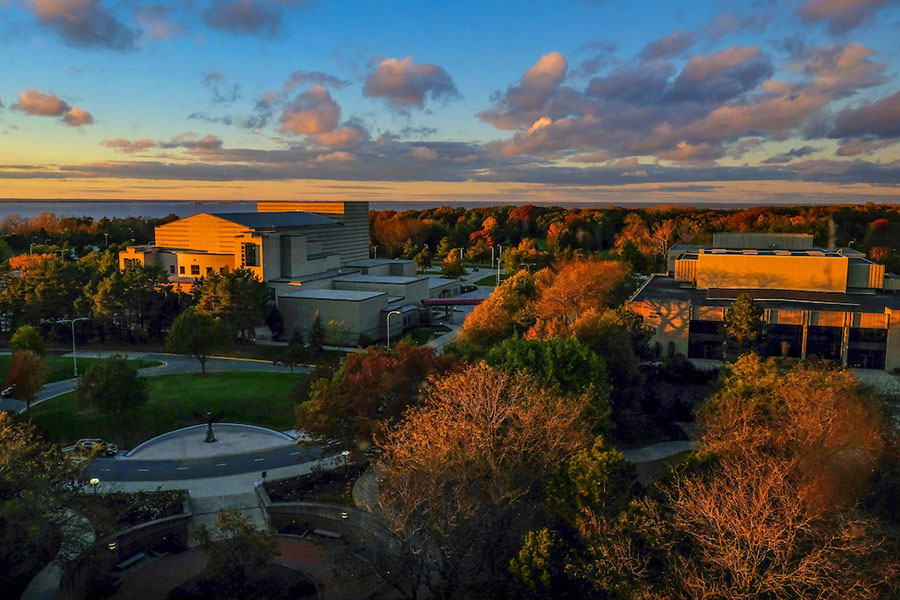
290 Acres of A Living Laboratory
Right here on campus.
True to UW-Green Bay's nature that inspired the title Eco U®, the Cofrin Memorial Arboretum is where environment and education intertwine. Spanning 290 acres, this green space blends preservation with hands-on learning. Our trails, winding through diverse ecosystems, lead to endless research and discovery opportunities. The Arboretum is more than a natural boundary; it's a habitat for 45 mammal species and over 200 bird species, along with native amphibians, reptiles, insects and other arthropods.
Natural Features
Our variety of habitat types leads to a wide array of research for our students and faculty.
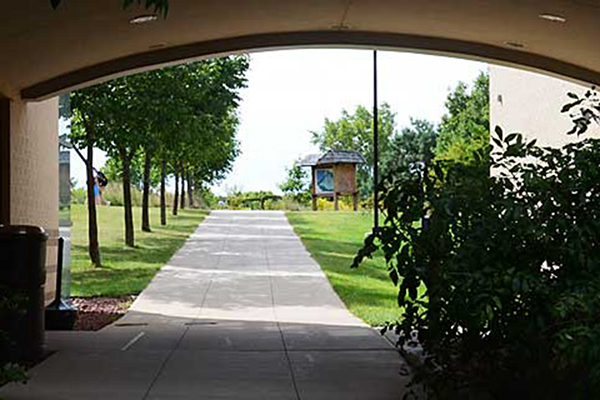
G. Douglass Cofrin Gateway
The gateway welcomes you to the wonders of the Arboretum! Here, you can enjoy views of plants and wildlife within the heart of campus.
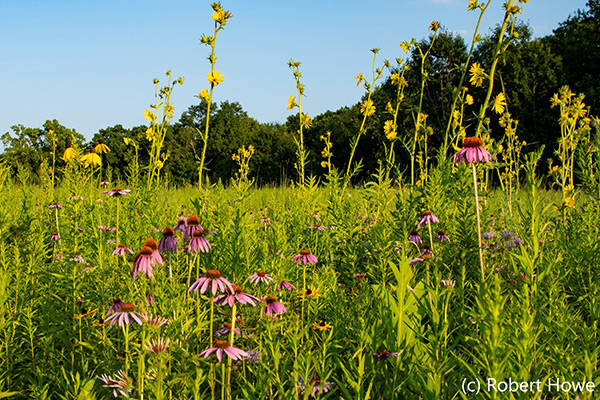
Keith White Prairie
To maintain the prairie and ensure flowers and grasses can flourish, we continually work on prescribed fire management that mimics natural fires.
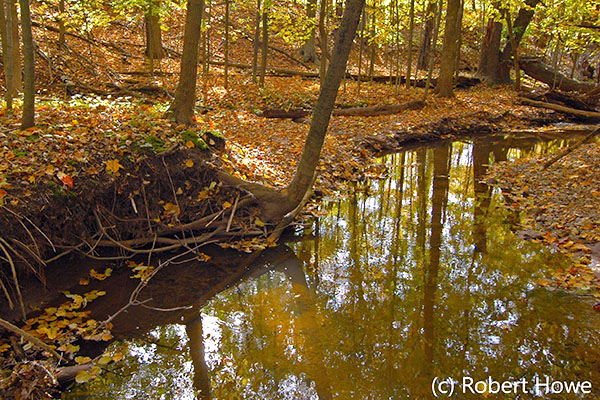
Mahon Woods & Creek
Witness the woods as they once were across Wisconsin. It's a special opportunity to enjoy one of the longest-standing woodlands in the area.
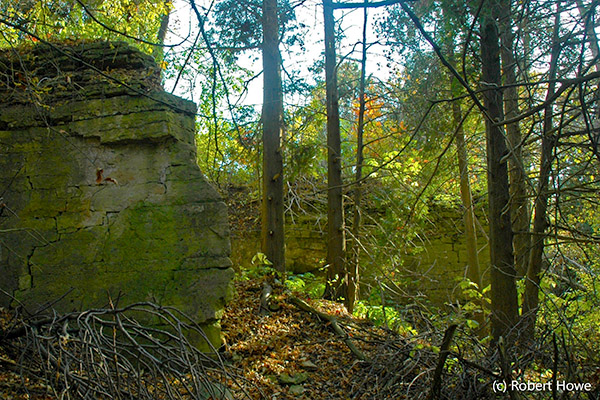
Niagara Escarpment
Who said Wisconsin was all flat fields? The Niagara Escarpment is composed of layers of hard Silurian dolomite with softer layers of Devonian and Ordovician rock.
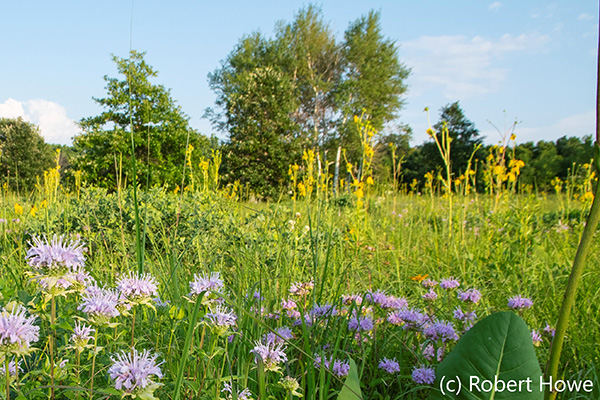
Oak Savanna Restoration Plot
From fields and farmlands to a thriving oak savanna, we're restoring this plot to what it once was.
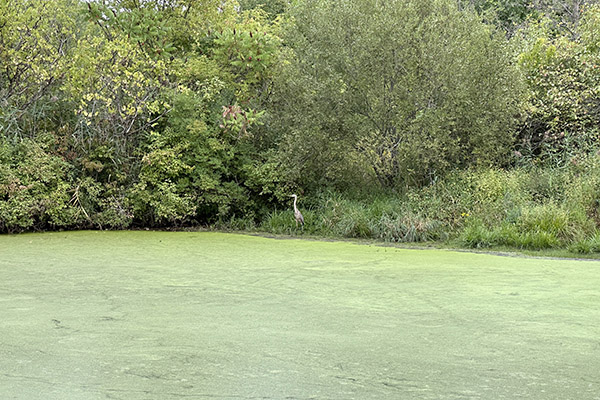
Sager Tract
The Sager tract includes two ponds, associated wetlands and there are several small natural springs on the slopes. Visitors can expect to see green herons visiting the ponds regularly during the growing season.
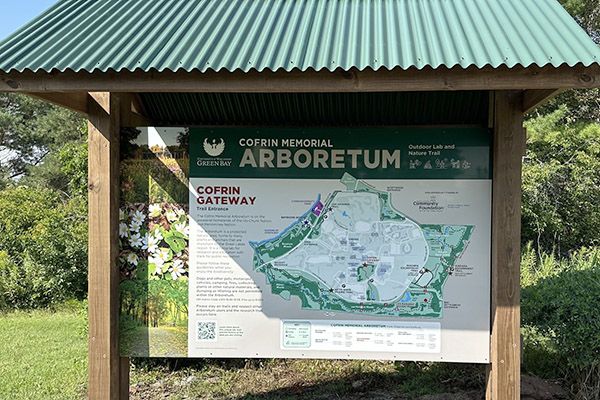
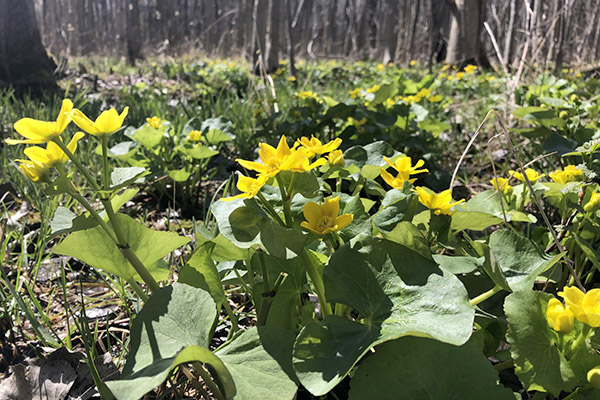
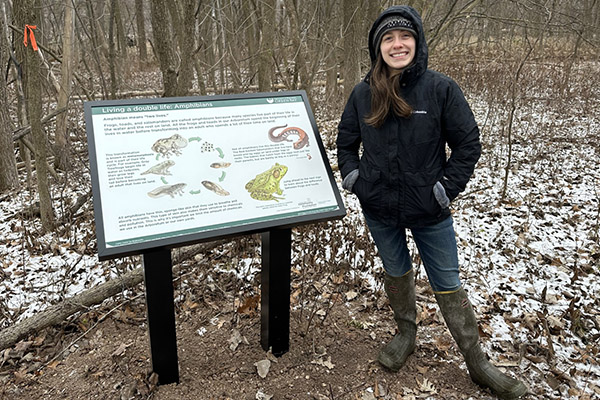
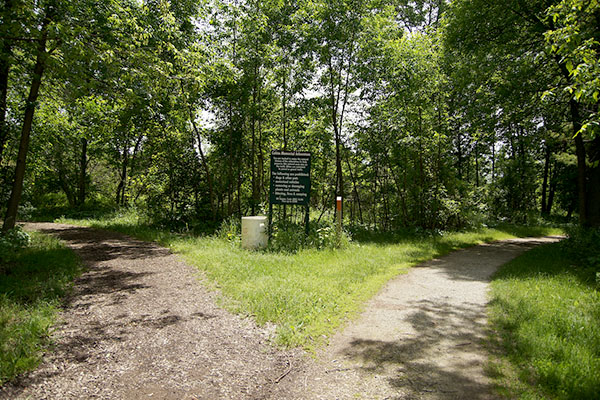
Caring for the Land
We're committed to research and education. But what does that mean for you?
Trails aren't meant for an easy stroll throughout the Arboretum; they're for access to research and education opportunities. Managed by the Cofrin Center for Biodiversity, here are some of the work we've achieved:
- Installed 6 new kiosks with updated trail maps and information at trailheads.
- Replaced 30 trail markers with QR codes linked to trail maps.
- Installed 4 new interpretive signs in Bayshore Woods, designed by CCB student Haley Spargur.
- Enhanced 26 acres of prairie, focusing on invasive species control (e.g., crown vetch) and prairie species management in Keith White Prairie, G. Douglas Cofrin Gateway and the oak savanna.
- Improved 30 acres of woodland by controlling invasive species, including garlic mustard, Dame’s rocket and buckthorn in Mahon and Bayshore Woods.
- Diversified the upper ledge pond area in the Paul Sager Tract through native seeding efforts, installation of 500 plant plugs and phragmites control.
Public Access
From campus to community, the Arobretum is for all.
Parking
The best free parking for the public is at Shorewood, but in the warmer months there is also parking at Communiversity park and Lambeau Cottage.
Hiking
More than 7 miles of trails are open to the public for activities such as hiking, biking (asphalt & crusher dust trails only), bird-watching and cross-country skiing.
A Brief History of the Arboretum
Northeast Wisconsin is part of the Laurentian Mixed Forest Ecological Province (Bailey 1995), a 147,000 square mile area that extends from New England to north-central Minnesota. The entire region was covered by glaciers during parts of the Pleistocene Epoch, and glacial landforms are prominent throughout. Most of the Laurentian Mixed Forest Province was covered by transitional forest of northern hardwoods (sugar maple, American beech, eastern hemlock, yellow birch, white pine) prior to European settlement in the 1800s. The area occupied by the UW-Green Bay campus today, however, was covered mainly by oak forest, indicating a drier and more disturbance-prone local environment.
The UW-Green Bay campus was chosen in part because of its natural beauty. Although the land was largely agricultural prior to construction of the university in 1969, the site included the wooded bay shore, Mahon Creek and surrounding forest and the Niagara Escarpment. Even the open farmland was seen as having potential for enhancement with appropriate plantings. A primary objective for the development of the University was the preservation and enhancement of the beauty of the site's natural conditions in ways that would benefit the entire community.
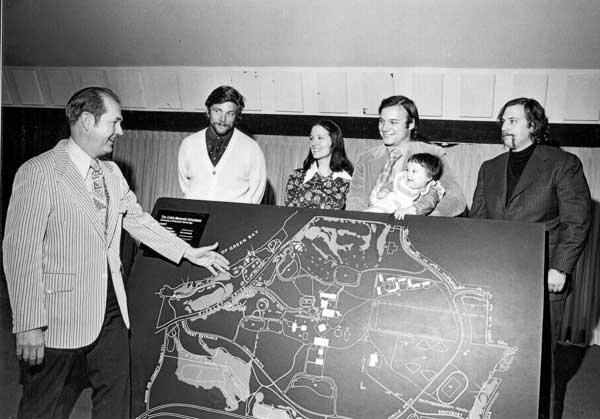
In 1971, founding Chancellor Edward Weidner appointed a faculty and staff committee to develop a long-range campus plan with this goal in mind. In December of the same year, the committee recommended the development of a park-like arboretum and trail system around the periphery of campus. Chancellor Weidner commented in 1972: "Green Bay has long prided itself on its park system. The wise decision to leave open areas of varying sizes for recreational uses throughout the city has contributed greatly to the pleasure of living here. What we are proposing is merely an extension of the philosophy that has already produced such great benefits to the residents of this area." In 1975, the children of John Cofrin chose to honor him and their grandfather, Austin Cofrin, through an endowment that allowed the university to develop the Arboretum. At the time their generous gift was made, the donation from the Cofrin children was the largest donation ever given to a University of Wisconsin institution outside of the Madison campus.
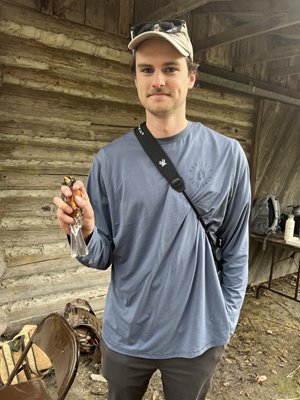
Meet a
Phoenix
"I think what UW-Green Bay does can be an important example for those who visit on the importance of proper land stewardship and caring for the wildlife we live alongside. Natural areas are preserved for the wildlife that depend on them and we are included in that list. Natural spaces are vital for our physical, emotional, mental and spiritual well-being and their preservation should always be a priority."
Sam Gerarden '23
Bachelor's Degree in Biology, Master's Student in Biodiversity Conservation & Management
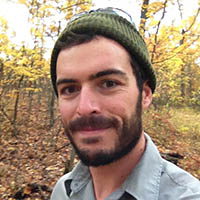
Meet Your Guide
Meet Andrew LaPlant, UW-Green Bay alum and Natural Areas Manager. In addition to leading ecological restoration efforts, he also facilitates outdoor classroom experiences for students. If you have questions about the Cofrin Memorial Arboretum, he can help!